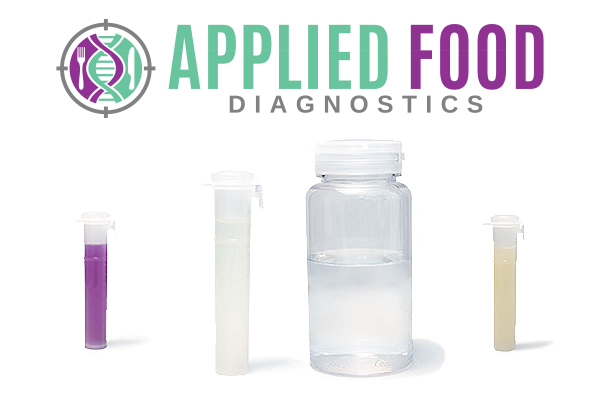
Buffers come in various forms, and are used during sample collection and storage, prior to sample processing in a lab. Sample collection devices, such as a sponge, are available either pre-moistened with a buffer or unhydrated with a buffer added after swabbing. Some of the most common buffers and their typical applications are:
-
Buffered Peptone Water (BPW)
-
Butterfield’s Phosphate Diluent (BFD)
-
Letheen Broth (LB)
-
DE Neutralizing Buffer (DENB)
-
Neutralizing Buffer (NB)
-
Neutralizing Buffered Peptone Water (nBPW)
-
Neutralizing and Recovery Broth (NRB)
Buffered Peptone Water (BPW)
BPW is commonly used and is recommended by ISO 6759 for recovering injured Salmonella from environmental and food matrix samples. BPW can also be used to assist with the detection and enumeration of other microbiological organisms, such as Enterobacteriaceae under ISO 21528.
Common applications:
-
Poultry facilities (environmental)
-
Poultry matrices
-
Cattle facilities (carcass swabbing)
-
Dry pet food
-
Vegetable and fermented products
-
Dry goods
Butterfield’s Phosphate Diluent (BFD)
Butterfield’s Solution, also known as Butterfield’s Phosphate-Buffered Dilution Water, is recommended for use for enumeration and detection of microorganisms in dairy, food, pharmaceutical, and water applications. Butterfield’s Solution is a common diluent used when microorganisms, such as bacteria, are too numerous to be effectively quantified.
Common applications:
-
General diluent in laboratory procedures
-
Microbial limit testing for pharmaceutical products
Letheen Broth (LB)
Letheen broth is most commonly used to determine the effectiveness of cleaning and sanitation efforts. Letheen broth will neutralize common disinfectants, including quaternary ammonium compounds (Quat), to allow for better growth and subsequent recovery of target organisms. Letheen Broth is also compatible with molecular detection (PCR) assays, and all components are listed on the EAFUS as acceptable for use in food.
Common applications:
-
Recovering bacteria from solutions containing residues of sanitizers from food utensils and equipment
DE Neutralizing Broth (DENB)
DE Neutralizing Broth is commonly used in areas where disinfectants are highly concentrated. Use of DE Neutralizing broth is generally more effective at neutralizing chemicals used for disinfection, such as Quat, than other media. DE Neutralizing Broth is also compatible with PCR assays, but not all components are listed as acceptable for use in food.
Common applications:
-
Disinfectant evaluations
-
Environmental sampling (swab and contact plate methods)
-
Hydrophilic cosmetic and antiseptics
Neutralizing Buffer (NB)
Neutralizing buffer has the ability to inactivate bactericidal and bacteriostatic effects of sanitizers such as chlorine and quats. This buffer is able to neutralize sanitizer quickly, which allows for the retention of bacteria on the sponge due to high pH levels of these cleaners, leading to more detection of viable organisms.
Common applications:
-
Detection of microorganisms found on dairy or food equipment disinfected with chlorine or quats
Neutralizing Buffered Peptone Water (nBPW)
Neutralizing buffered peptone water is highly recommended by the Food Safety and Inspection Service (FSIS) for use in chicken carcass rinses in poultry facilities for the detection of Salmonella and Campylobacter. FSIS determined Neutralizing Buffered Peptone Water to be more effective than Buffered Peptone Water for the detection of those microorganisms
Common applications:
-
Chicken carcass rinses
-
Turkey carcass swabs
Neutralizing and Recovery Broth (NRB)
Neutralizing and Recovery broth contains nutritive components which aid in the recovery and growth of microorganisms in samples taken from surfaces exposed to sanitizers. It is recommended where highly acidic sanitizers are being used. It is also extremely effective at neutralizing quaternary ammonium compounds, free chlorine compounds, high acid compounds, and peroxyacetic acid compounds.
Common applications:
-
Environmental monitoring in food manufacturing facilities
-
Detection of bacteria on food contact surfaces disinfected with chlorine or quats
-
Listeria environmental monitoring and sampling (swab and contact plate methods
-
Disinfectant evaluations
